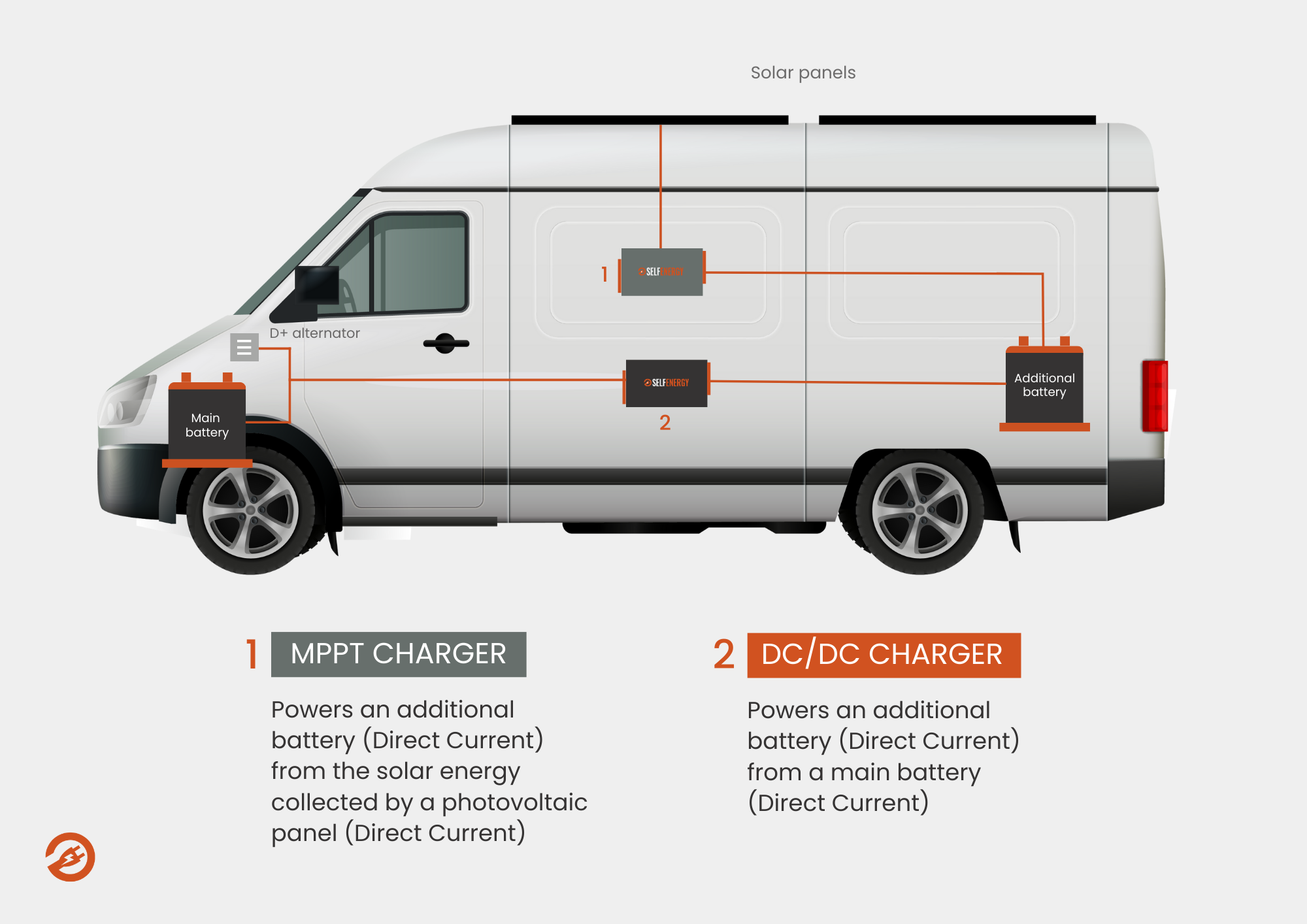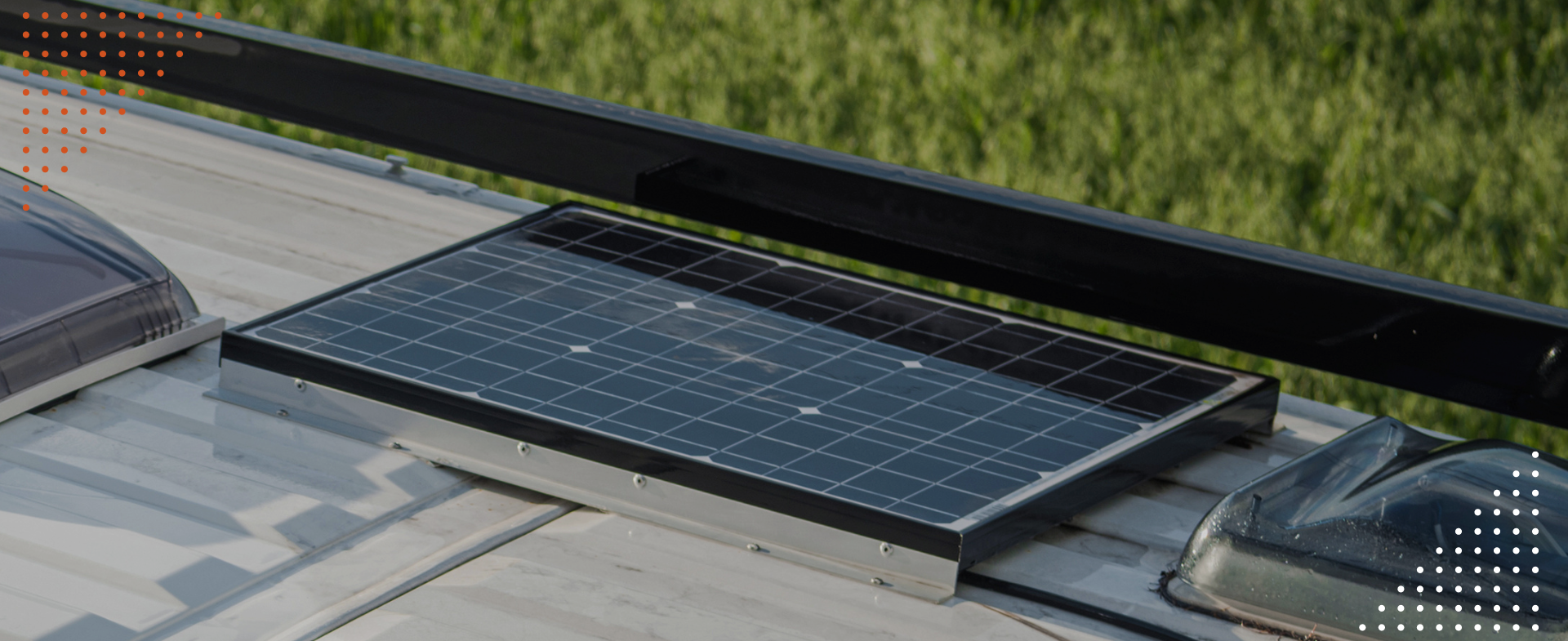With the rise of solar energy, the MPPT charger is an effective solution for safely recharging a battery from the electricity produced by a photovoltaic panel. Embedded in a mobile (vehicle, boat etc) or stationary (off-grid solar system) solution, this electronic device contains cutting-edge technology and allows the system to be freed from the conventional electrical system to improve its overall efficiency.
In this article, we will review the operation of an MPPT charger as well as its compatibility with other types of chargers, in particular the DC/DC converter-charger.
The MPPT charger
The MPPT (Maximum Power Point Tracker) charger is a solar charge controller that optimises the amount of energy produced by the solar panel and then converts it into AC or DC voltage/current.
Before we look at how MPPT works, it is worth noting that there are other solar charge controllers, including PWM (Pulse Width Modulation).
The PWM controller is a conventional controller that is less advanced than the MPPT. PWM does not use the maximum power available from the PV panel and requires the use of solar panels with a nominal voltage close to that of the battery to avoid any risk of overheating.
The MPPT charger allows it to optimise the charging process by converting the maximum solar output to match the battery voltage through DC/DC conversion. It can be connected to photovoltaic panels and batteries of different voltages.
MPPT charger and battery charging
The MPPT is primarily a DC/DC converter. That is, it converts the DC current from a solar panel to power a battery that also runs on DC current. The MPPT is specially designed to monitor the voltage and current from the solar panel in real time.
In operation, this solar charger optimises the charging of a battery using the energy produced by the solar panels. It maximises the performance of the panel by helping it to operate at the ideal voltage to produce maximum power output. The MPPT will seek a balance on the highest power point rather than going to the battery voltage and exploiting only part of the solar panel’s power. This feature allows a very significant energy gain, especially in low sunlight conditions.
Devices and operation
The MPPT can be :
- Embedded in equipped vehicles: camping-cars, vans, fire brigade vehicles, ambulances etc.
- But also embedded in a stationary devices. For example, it can be directly integrated on the electronic board and associated with other functions (BMS, LED driver, etc.) of a solar battery set that can power an autonomous system such as street lamps, outdoor displays, etc.
3 advantages of the MPPT charger
- The MPPT charger converts the direct current of a solar panel into direct current of different voltage in order to recharge a battery (on-board or stationary)
- The MPPT is an indispensable charge controller for the conversion of solar energy
- Thanks to its intelligence, the MPPT allows to increase the efficiency of the solar panel with a gain of energy stored in the battery of + 30% or even + 40% (compared to PWM)
Is there a complementarity between the MPPT and other chargers ? (AC/DC and DC/DC)
While the operation of an MPPT charger is very different from that of an AC/DC, there is a nuance to be noted in that it is MPPT and DC/DC.
Indeed, by definition the MPPT charger is a DC/DC converter which implies that the energy conversion process is similar (DC to DC). Only the energy sources used are different. The DC/DC charger is used to recharge an auxiliary battery from a main battery, whereas the MPPT uses the voltage and current produced by one or more solar panels to perform the same task. Both types of chargers can be parallelized for faster recharging of the auxiliary battery: more current and therefore power.

Differences between DC/DC and MPPT :

Complementarity between DC/DC and MPPT :

As an expert in energy conversion, Selfenergy is the ideal professional to accompany you in the development and industrialisation of your customised MPPT chargers.
Intelligent MPPT chargers developed by Selfenergy feature the latest innovations in terms of components, guarantee high efficiency and adapt to all battery electrochemistries (Lithium-ion, Lead, Ni-MH, etc.) with a charge current that can be adjusted according to your needs.
Would you like to know more about our chargers for your project?
Our sales team and engineers will be pleased to answer all your questions. contact us.
